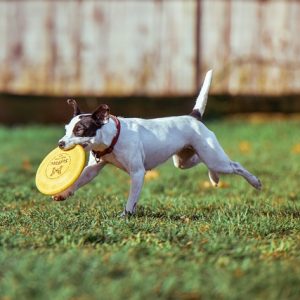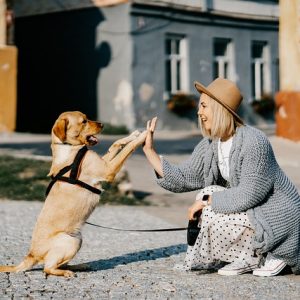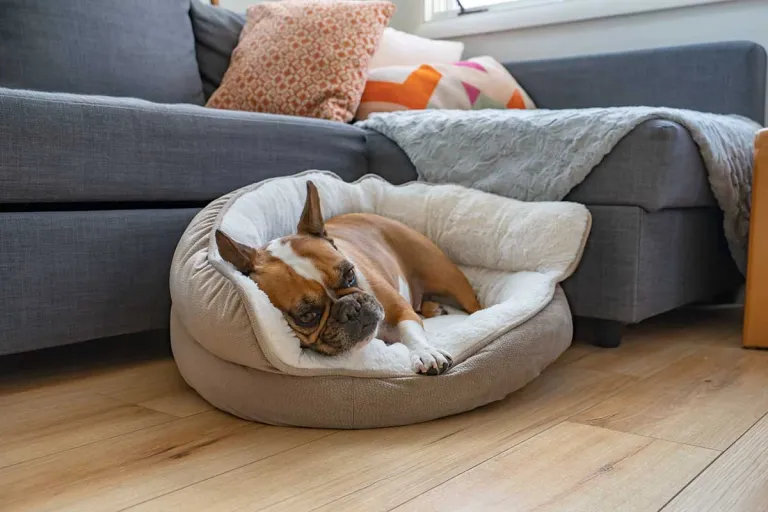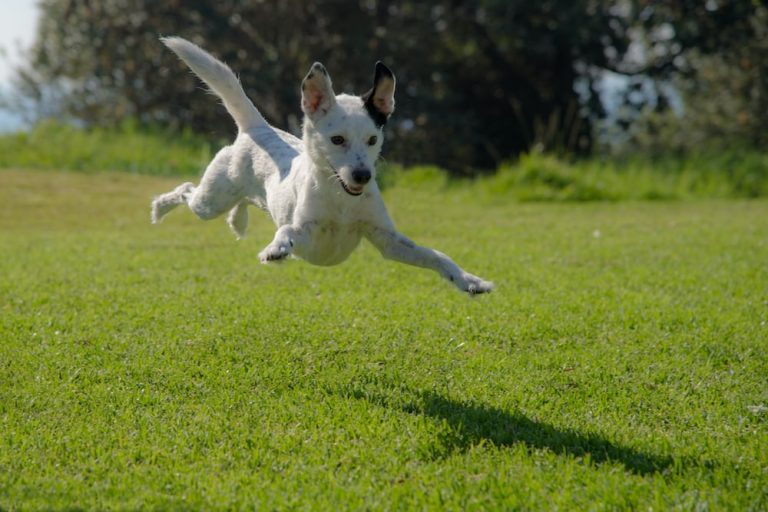Helping your dog get used to spending time alone
Teaching a dog to cope when home alone should ideally start when they are still a puppy. It’s important to help prevent separation anxiety from developing, so the sooner you can prepare them, the better.
Is your dog already struggling to cope by themselves? Here’s what to do if your dog is showing signs of separation anxiety.
Teach your dog how to be alone
Before leaving your dog home alone, you need to teach them that it is alright and that they will be able to cope on their own. The more you do this before you actually need to leave the house, the easier it will be when you do.
Here are a few ways you can do that:
- make sure they have a comfy bed or build them a doggy den
- teach your dog to settle down calmly when you are busy, rather than giving them attention when they follow you around
- use baby gates across doorways to introduce time apart
- leave them with a long-lasting treat or toy that releases food
- slowly increase the time you leave them alone while you’re in the house
- start to build up the time you leave the house for
- factor some time apart into your daily routine.
It’s important to build up time apart very gradually and associate it with something positive, like a long-lasting treat. Monitor how your pup responds, and shorten the time left if they show any signs of anxiety.
It’s normal for dogs to want to be with us, but ultimately you want them to learn to enjoy being by themselves and to not follow you around and rely on your attention. That way, they will be able to cope better when you do leave the house and they are alone.
Prepare your dog for being left home alone
Before you leave your dog at home, there are a few things you can do to help them feel calm and relaxed.
Tip one: Take your dog for a long walk before you go out
Before you leave your dog alone, make sure they have been out for a long walk. This will give them a chance to burn off some energy, tire themselves out and go to the toilet. That way, they will hopefully be ready to settle down and sleep while you are out.
Tip two: Make sure they have everything they need
Before you go out make sure your dog has access to water and their food or a long-lasting treat.
You could also leave an old item of clothing that smells like you in their bed – and don’t forget that doggy den, which will help make them feel safe and relaxed. Leaving the TV or radio on may also help with this.
Tip three: Don’t make a fuss when you leave or return
You don’t want to make you leaving and returning to the house a big deal for your pooch. Make it as uneventful as possible so don’t make a big fuss of them.
Start by getting everything ready, so you can leave quickly and calmly. You could also use a word or phrase (such as “see you later”) that helps to establish a routine.
Tip four: Don’t tell your dog off
Dogs develop separation anxiety because they are worried. Telling them off or being angry when they behave in a way that you don’t want is likely to make things worse. If you come home and your dog has scratched up your floor or been to the toilet inside, they won’t know why you’re telling them off as they don’t understand that this is ‘wrong’. Being angry with them may make them worried about you coming home, as well as being anxious about being left. Instead, focus on rewarding them when they remain calm and relaxed.
Tip five: Don’t leave them on their own for too long
Dogs shouldn’t be left alone for more than four hours anyway. But if your dog is showing signs of separation anxiety then you should continue to build up to this gradually. If you do have to go out for longer, organise for someone to pop in or for your pooch to go to doggy day care.
Causes and Triggers of Separation Anxiety:
Prevalent causes of separation anxiety in dogs:
- Early life experiences: Dogs that have experienced early trauma, such as being abandoned or separated from their mothers too soon, are more prone to developing separation anxiety.
- Changes in routine or environment: Dogs are creatures of habit, and sudden changes in their routine, such as a new home, a new family member, or the absence of a family member, can trigger separation anxiety.
- Lack of socialization: Insufficient exposure to different people, animals, and environments during a dog’s critical socialization period can contribute to separation anxiety.
Identifying triggers that exacerbate separation anxiety:
Every dog is unique, and certain triggers may intensify their separation anxiety. Some common triggers include:
- Departure cues: Dogs may associate specific cues, such as picking up keys or putting on shoes, with their owner’s departure, which can trigger anxiety.
- Lengthy absences: Dogs that are left alone for extended periods without proper mental and physical stimulation are more likely to develop separation anxiety.
- Previous negative experiences: Dogs that have experienced traumatic events while being alone, such as accidents or injuries, may develop anxiety related to those specific circumstances.







